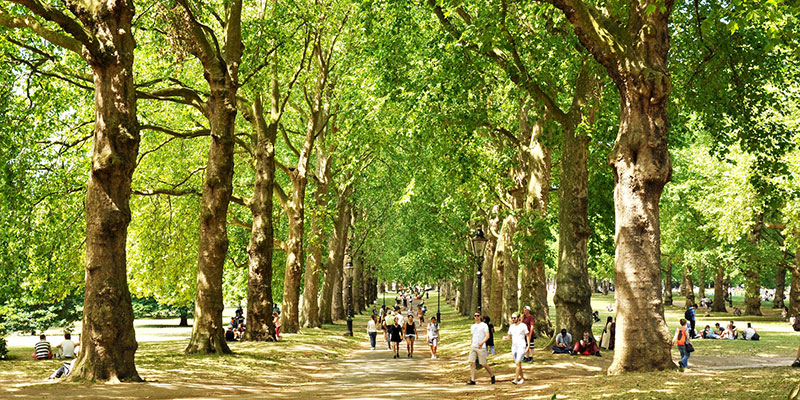Why is access to green and natural spaces important?
Posted on Tuesday 3 August 2021

I’m looking forward to being able to share the findings of our project into the drivers behind inequalities in accessing greenspaces in Leeds soon, but in the meantime I wanted to write something about why I think it’s an important topic to study, and some considerations about the potential impact of COVID-19 lockdowns and other restrictions. I’m not alone in thinking about this as the UK government has made multiple policy commitments to improve access to green and natural spaces, through a target of “making sure that there are high quality, accessible, natural spaces close to where people live and work, particularly in urban areas, and encouraging more people to spend time in them to benefit their health and wellbeing” in the 25 year environment plan and also Public Health England’s recent review on ‘Improving access to greenspaces’.
As I wrote in my previous blog, there is strong evidence that in England (and elsewhere), access to green or natural spaces is unequally distributed, with people on lower incomes and from ethnic minority communities least likely to visit these places.


Data from Natural England 2019
Health
This is the big topic that you’ve probably read or heard something about in the last few years. There is now overwhelming evidence to show that spending time in green or natural spaces is beneficial for both our physical and mental well-being. This is because people tend to be more physically active in greenspaces, have increased social interactions, develop or learn skills and greenspaces can reduce the impacts of different types of pollution.
The groups who are currently least likely to visit these spaces, are also unfortunately the groups who already face poorer health outcomes in England and therefore would gain the most from the benefits of spending time in green or natural spaces. Public Health England have estimated that the increase in physical activity from providing equal access to greenspaces could save the NHS £2.1 billion per year.
Equity
Probably more importantly, improving access to greenspaces is an important social and environmental justice issue. It intersects with the recent Black Lives Matter movement, and organisations, such as Black Girls Hike and Backbone, have been working hard to try and overcome barriers for these groups.
Biodiversity conservation and climate change
On a more practical note, there is some evidence to suggest that people (particularly children) who spend time in green or natural spaces are more likely to support environmental conservation and engage in ‘pro-environmental behaviours’, such as recycling. Whilst we need political will and commitments to meet climate change and conservation targets, individual actions will also have an impact.
So in conclusion, it is clear that improving access to greenspaces, and reducing the inequality in access is beneficial for everyone and the environment. In order to improve access, we first need to better understand the barriers that stop people from visiting green or natural spaces, so that we can design interventions to overcome these barriers.
Impact of COVID restrictions
During the lockdowns, if you were visiting your local park, reading the news or checking out instagram, you might have assumed that everyone benefited from getting out into their local greenspaces more. This is something that we have been investigating in our research, and preliminary findings suggest that restrictions may have exacerbated existing inequalities. But it cannot be denied that some of England’s greenspaces faced increased visitor numbers and the pressures that can cause on the environment, facilities and local residents. This summer once again, with the recent heatwave, school holidays, and continued restrictions on travelling abroad, we’re already seeing newspaper headlines about the numbers of people visiting beaches, national parks and other green and natural spaces. The greatest environmental management challenge over the next few decades in England may well be managing these spaces to provide benefits for wildlife, people, and the wider environment.
